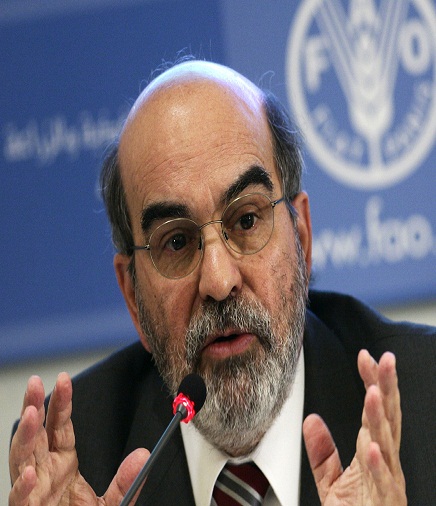With more than one in five people estimated to be undernourished, Africa remains the region with the highest prevalence of undernourishment in the world. But Africa is far too big to be a single story. Africa has seen success in the fight against hunger and in increasing food production, but is still faced with significant food security challenges.
The success stories range from rolling out of improved banana varieties in central Africa to the introduction of high-yielding varieties of maize in east and southern Africa. Productivity gains in cassava in western Africa have been immense, while cotton production in the Sahel region has been impressive. East Africa has stamped its authority on tea and floriculture production and is now the preferred choice of major markets in the world.
On the other hand, the recurrent food security crises in the Horn of Africa and the Sahel are stark evidence of the need to build resilience in the region and to cope with recurrent droughts that become more frequent and extreme with climate change. The combined effects of drought, high food prices, conflict, displacement and chronic poverty has caused untold suffering to millions across the continent.
Africa has the possibility to change this and build on its success stories to advance food security and sustainable development in the region. The launch of the Comprehensive Africa Agriculture Development Plan (CAADP) in 2003 has helped spur food production and food security. African governments have shown their commitment to achieve food security, identifying their individual pathways under this regional framework. Experience has shown us that countries that have seen greater progress are those that managed to allocate at least 10 percent of their national budget to the agricultural sector in line with the Maputo Declaration and implemented CAADP compacts.
As of today, nearly 20 African countries have already achieved, or are on track to achieve, the first Millennium Development Goal of halving the prevalence of hunger by 2015. Halving hunger is an important step, but still a step towards the true goal of ending hunger. Africa is moving in the right direction. In the African Union Summit last January, its leaders endorsed a proposal to establish a 2025 zero hunger target for the region. This goal is set to be formally adopted at the next AU Summit later this year and is a powerful sign of commitment to the future we want.
So far, forty countries have signed CAADP Compacts and 28 countries have developed National Agriculture Investment Plans, the challenge is implementing them. Insufficient investment in agriculture and social protection are still bottlenecks for increasing food production and reduction hunger. It is thus up to national governments, in partnership with the international community, the private sector and farmers’ organizations to create the conditions for sustainable rural development.
We need innovative types of financing arrangements, diverse forms of public-private partnerships and new ways of South-South cooperation that clearly put food security and the needs of poor, small-scale farmers and pastoralists center-stage.
The Africa Solidarity Trust Fund is one such example of innovative financing. Officially established in 2013, the fund provides a mechanism through which higher-income African countries can help strengthen food security across the continent by assisting countries and their regional organizations in their efforts to eradicate hunger and malnutrition, eliminate rural poverty and sustainably manage natural resources. This is not only a sign of solidarity but also of understanding that in today’s world, we cannot reach food security in one individual country.
The ongoing efforts should help Africa tap into its full economic potential and make the growth it is experiencing more inclusive. There are two keys to make this happen: youth and agriculture. And they will be at the center of the agenda of the FAO African Regional Conference that takes place from 24 to 28 March 2014 in Tunisia.
Today, more than half of the African population is under 25 years old. This makes it the youngest region in the world. Approximately 11 million young Africans will join the labour market every year for the next decade. Creating decent employment opportunities for this young labour force – in a transformed, dynamic and vibrant agricultural sector – will be crucial if Africa is to reap this demographic dividend.
2014 is a good year to raise awareness of the importance of agriculture and youth for inclusive, sustainable development in Africa. The United Nations has declared 2014 as the International Year of Family Farming and the African Union also celebrates its year for Agriculture and Food Security. Let’s seize this opportunity to focus our attention, our policies and our advocacy in promoting agriculture and the farmers, fishers, pastoralists, forest collectors and traditional and indigenous communities that contribute so much for food security while, many times, receiving so little support.
Africa has the economic, natural and human resources it needs to promote food security and sustainability in the continent. With political will, comprehensive programs bridging agricultural production and social protection, adequate funding, and by tapping into the potential of its youth, we can get there. We are in this together.
By José Graziano da Silva, FAO Director-General
























